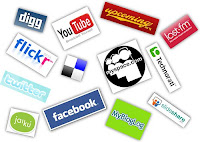 This issue's focus will be on freelancing tips. While our business is down, this is the time to regroup, reinvent and market in new ways.
This issue's focus will be on freelancing tips. While our business is down, this is the time to regroup, reinvent and market in new ways.TORRANCE, CA 90501
PHONE: (310) 326-4500
Wednesday, October 14, 2009
SPOTLIGHT - FREELANCING TIPS
 This issue's focus will be on freelancing tips. While our business is down, this is the time to regroup, reinvent and market in new ways.
This issue's focus will be on freelancing tips. While our business is down, this is the time to regroup, reinvent and market in new ways.10 Ways To Make Your Freelance Business Fail
Here are ten easy ways to fail at freelancing with hardly any effort:
- Take deadlines as a loose suggestion. If you can meet a deadline, great. If not, well don’t sweat it. You’ve heard of the saying “fashionably late?” Well, when it comes to freelance failure that saying applies to projects too.
- Take your time when replying to clients. Why reply today when you could reply tomorrow? Keeping them waiting is one of the best ways to fail. The longer the wait, the better your chances of scaring them away.
- Don’t answer your phone either. There could be a client or potential client on the other end of that line. You have better things to do with your time than talk to a client. Let it ring! Best of all, don’t invest in an answering machine or any kind of voicemail system, that way you’ll never even have to get back to them.
- Don’t deliver what the client wants. You’re probably smarter than your client and your taste is probably better than theirs too. When your desires conflict with the client’s wants, choose to do what you want to do. You’ll be happier, and they’ll get a better project.
- Let your emotions out, all of them. If you’re mad at a client, let them know about it. There’s no sense in letting all that anger build up inside you where it could possibly spoil your day. Why not let it spoil your client’s day instead?
- Run errands. If you work at home, you’re probably surrounded by household tasks that need doing. Why not take a break from work and do them? After all, your priorities are at least as important as the priorities of your clients, right?
- Fast track your failure with video games. Video games are awesome if you’re trying to fail at freelancing. You can spend hours, even days, playing video games instead of working on your projects.
- Get wrapped up in daytime television. You’ve probably heard people say that “there’s nothing on during the day.” Well, they’re wrong. Turn your television set on and you’ll quickly discover that there are programs that air during the day.
- Take up a hobby. Be sure to choose one that has nothing at all to do with your freelancing business. Devote as much time as possible to your hobby –even time that you would normally reserve for client work.
- You have a bed, use it. Don’t bother to get up in the morning. In fact, if you don’t feel like it, don’t get up at all. When you’re trying to fail your rest is much more important than your freelancing business.
All right, nobody really wants your freelance business to fail.
However, we freelancers sometimes behave as though we want our business to fail without realizing it. Recognizing and eliminating these failure-causing behaviors can actually help you find freelancing success.
Did you recognize yourself in any of these failure tips, even a little bit?
Seven Lies Freelancers Tell Themselves

There’s no doubt that freelancing can be tough — freelancers face many obstacles. From finding clients, to meeting deadlines, to keeping skills and equipment current, all the way to being paid: freelancing just isn’t easy.
One of the biggest challenges that we freelancers face, however, is one of our own making. It’s the challenge of being totally honest with ourselves and accepting the reality of certain situations. Without overcoming this challenge, without learning to be totally honest with one’s self, it’s pretty tough to succeed.
Lie #1 — I don’t need to market my business
This lie is dangerous because it shortchanges your future ability to earn. Although you may have plenty of clients right now, that could change in an instant. All it takes to go from being to busy to needing clients is for one or two major clients to stop calling on you. Freelancers should be continuously marketing their services — even when they are too busy to take on new work.
Lie #2 — A high-dollar job is a good job
It’s important to always consider the scope of the work being requested with the amount of the offer. I’ve known of freelancers to commit weeks (and even months) of their time to a project that worked out to be less than minimum wage because they overlooked the scope of the work. A $1000 offer isn’t a good deal if the work takes hundreds of hours to complete.
Lie #3 — Clients don’t like being asked questions
Good client communication is crucial to running a successful business. Most clients understand this and are happy to answer questions if they are asked in an organized and respectful manner. If you can do so without compromising the project, try saving all of your questions to ask at one time. Asking questions shows that you want to get the project right, and is always good business practice.
Lie #4 — All that time spent reading blogs, it’s networking
So, you’ve been spending a lot of time reading a lot of blogs. Good for you! You can learn a lot from blogs. However, networking has two important elements: interaction and strategy. If you don’t ever interact with others and you don’t have a strategy, then you aren’t really networking. Actually, there’s another term for what you are doing. It’s called “websurfing.”
Lie #5 — There is such a thing as a free lunch
Everybody would like to get something for nothing, and freelancers aren’t much different from anyone else. In fact, you’ve probably already read many advertisements that promise to teach you a “money-making system” that requires little effort on your part to achieve great success. Don’t believe it for a minute! Successful freelancers are those who realize that they have to work hard to earn what they have.
Lie #6 — I’m an expert, I don’t need to update my skills
No matter how much experience you have, how many degrees you have, or how well known you have become — there is always something new to learn. Don’t rest on your past experiences. If you do nothing to improve your skills, you won’t stay where you are. Instead, you’ll actually find yourself falling behind. No matter how busy or successful you are, always make time for additional training.
Lie #7 — What works for [Big Name Freelancer] will work for me.
It’s easy to believe this lie. You hear, or read about how someone else achieved success and assume that the same steps that he or she took will work for you. While it is a great idea to learn from others’ successes, you shouldn’t expect to have an identical experience. Each of us exists in our own unique freelancing environment. What works for one, won’t necessarily work for all.
Don't Lowball your Clients!
You want to know what the project’s budget is, but they can’t tell you. Start-ups and small companies often don’t have a set budget for projects like these. They are looking to you to provide a price quote, so they know what they can expect to pay.
Still, your gut is telling you this client can’t afford you. What do you do?
As an experienced freelancer, you know that ignoring sales leads, while sometimes tempting, is terrible business.
Instead, if you really want the client, you might provide a lowball estimate, hammer out some quick work at a low cost, collect your twenty dollars and call it a day. But this approach has several pitfalls.
- Even a budget client can turn out to be high maintenance.
- Too much for too little is a big problem no matter who you’re dealing with.
- The client could eventually leave for a more expensive vendor.
Just Bid It
Instead of lowballing the project — risking an awkward client relationship and setting the wrong precedents — just provide them with a quote like you would any other client? After all, they came to you because they want your professional services and style, and you’re not bargain-basement material.
When creating the quote, make sure it’s balanced, fair, and somewhat realistic for a startup or small company — while also true to what your services actually cost. If you have a bad feeling then don’t spend too much time on the estimate, but still provide something in range of your own professional standards. They’re probably not expecting a glossy, ten-page proposal — but just sending a quick email might look like you’re blowing them off.
Often times, you’ll be glad you bid at your standard rates. Maybe you will get the contract, maybe you won’t. But if you do, it will be on your terms, and for a price you know you’re worth.
If it turns out your gut feeling was right, and they can’t afford you, you might still congratulate yourself — because you’ve made an investment on the future. They may choose someone cheaper, but deep down, they still want you. They may hang onto your business card, check up on your work, and even refer their colleagues your way. And many times, months or years later, they may come back — with a budget you can work with and plenty of respect.
SOCIAL MEDIA

If you’ve ever wondered whether or not social media can help you as a freelancer, the simple answer is —absolutely. Being social on the web has many rewards; including connections, community, interaction, exposure, and trust. These five elements are critical for a business to survive, and with social media you can make sure you are building all of them.
Once you’re familiar with the idea of using social media for your business, here are 5 simple tips that can make a big difference to your success with social media.
1. Pick a Name and Stick With It
Before you even open an account on any social media platform, you’ll want to make sure you pick a name and picture that will stay consistent. This is one of the key things that many people don’t seem to realize. If you have the same “profile name” on multiple platforms, it makes it much easier for others to find and remember you. It also helps you create a better personal brand if you become popular on these networks. F
2. Don’t Put All Your Eggs In One Basket
Many freelancers dive into social media and end up putting all of their energy and effort into one social media platform. This is not a great approach. Although it is good to stick with platforms that are popular in your industry, it’s key to build a community and a brand in different platforms. Having a presence on different accounts gives you a chance to connect to more people and eventually will help you grow your freelancing business.
3. Choose and Execute
Although this point may sound contradictory to the one above, it’s really more of a complimentary approach. As I have mentioned above, you should have a presence on several different social media platforms — however, you should also be able to maintain that presence. There is no point in creating a profile on 50 different platforms if you can only use five platforms actively.
4. Active Doesn’t Mean Obsessive
In order to get the most out of social media you have to be active on the networks you’ve chosen. Being active, however, doesn’t mean you have to be obsessed. There is no point in updating a Facebook profile or Twitter account just for the sake of it. As they say in blogging — if you have nothing to say, it’s better to say nothing. Follow that rule on social media platforms as well.
5. It’s All About Interaction
Social media is all about interaction. If you want to be seen and want others to take interest in what you have to say or do, you have to be an active participant. Whether it’s Facebook, twitter or any other platforms that you utilize, participation and engagement is the key to succeeding in social media. Social Media is often seen as a free tool to help you when it comes to exposure and creating a name for yourself or your business, but you need to keep in mind that it costs both time and effort.
Social Media Basics
- Look at what you are already using.
- Look at what your clients and colleagues are using.
- Look at what your industry trendsetters are using.
We freelancers are used to wearing many hats, however, and most of us can learn to be our own social media specialists and develop a presence without much outside help.
Here are some tips to get a maximum social media impact for a minimum social time investment:
- Focus your presence on two or three social media sites.
- Schedule time for social media interaction each day.
- Don’t just promote yourself. Many business owners make the mistake of thinking that social media is all about them. Their social media participation seems almost like advertisements. Social media is actually about interaction. Think of what your target audience (clients and colleagues) would find helpful and share that type of information even if it doesn’t directly relate to your company.
- Use the right tools. The tools you use to manage your different social media accounts can make a big difference in how easy it is, and how much time it takes. Check out this article for 35 social media tools that make life easier.
Social media - helping charities

We’ve all seen how social media is good for business. It helps build a brand, drives traffic and awareness and builds out communities. But, what we’ve also seen is social media bringing together people to lend their time to important causes on a global level. By using the sites we LIVE on every day (don’t tell me you haven’t realized you’ve been spending about 30% of your day tweeting)–why not use all of these friends and followers to do something good?
While many people have ideas to start a charitable program or event, actually doing something isn’t as easy. There is planning, event scouting, logistics, food, drink—you name it, it’s tough. Typically, this process can take weeks or months to come together. But, with the help from online communities this process can become even easier, and the results can be nearly instantaneous.
Looking for motivation to start your own charity event using social media? We’ve put together a list of recent events that have used the success of past events and others to springboard their efforts.
Click on title for list of these great events
These events illustrate the power that a small group of individuals and their networks can have to instantly and effectively change the world for the better, whether it be on a worldwide scale or to benefit one single individual in need. Knowing your audience, targeting marketing, appealing to the greater good, great timing, and a clear call-to-response help, but personal networks, trust and transparency have started to usurp years of tried and true offline fundraising techniques – and with more immediate impact. The art of fundraising is changing, and social media, like with so many other things, is helping to change the rules.
THE STATE OF OUR INDUSTRY
 THE VALUE OF MEETINGS
THE VALUE OF MEETINGSBusiness Growth
Meetings and events are valuable tools for U.S. businesses. Meetings and events drive business growth by fostering collaboration, idea-sharing and generation, and employee retention. Incentive programs have been shown to be two to three times more effective than cash at motivating employee performance. In a recent survey, Fortune 1000 Chief Marketing Officers said that meetings and events provide the highest return on investment of any marketing channel. A new study shows that 87 percent of Americans who have attended an out-of-town meeting or convention for work say it is important to running a strong business.
Employee Development
Good managers encourage the professional growth of employees, and employers must make sound investments in key staff in order to retain top talent and secure the bottom line. Far from being a perk reserved for executives, meeting and performance incentive travel provides valuable development and networking opportunities for employees at all levels.
SUMMARY
- Non-cash incentives are 2 to 3 times more effective at motivating employee performance, and companies spend less on incentive travel than on cash compensation to achieve exceptional productivity from employees.
- Meetings and events are strategic tools that deepen employee relationships and contribute to the overall health of companies. A 5% increase in employee retention can generate a 25 to 85% increase in profitability.
- Companies with satisfied employees generate better overall returns in the stock market, with firms on the list of “100 Best Companies to Work For” generating up to five times as much return as their competitors.
GREEN REPORT


INTERNATIONAL DAY OF CLIMATE ACTION - OCT 24
On Oct. 24th, the International Day of Climate Action, people
from over 150 nations will come together in creative climate
actions to take a stand for 350 and a safe climate future. There
will be 1000s of creative on-the-ground actions everywhere from
the slopes of Mt. Everest to the underwater reefs of the Maldive
Islands to the streets of our biggest cities. All designed to
drive the 350 message into the human imagination -- and help our
leaders realize we need a real solution that pays attention to
the science.
It's the combination of in-the-flesh activism and online
organizing that will carry the day here. On Oct. 24, activists
will be uploading images of their events in real-time and we'll
be displaying them on 350.org and on the giant screens of Times
Square. By day's end, we'll have an unprecedented global gallery
of images and stories, enough to make both old media and new
ring out with this crucial number.
We need to make this viral movement go double viral (think Panda
sneezing) -- and so we need your help. In the last 18 months,
350 has moved from the pages of a scientific paper to the center
of a global movement. Now it's time to make that number...
count. We have a whole series of tools at http://350.org and
http://350.org/bloggers that you can use to spread the word, and
we're enormously grateful to you for doing so!
Onward,
Bill McKibben, co-founder, 350.org
